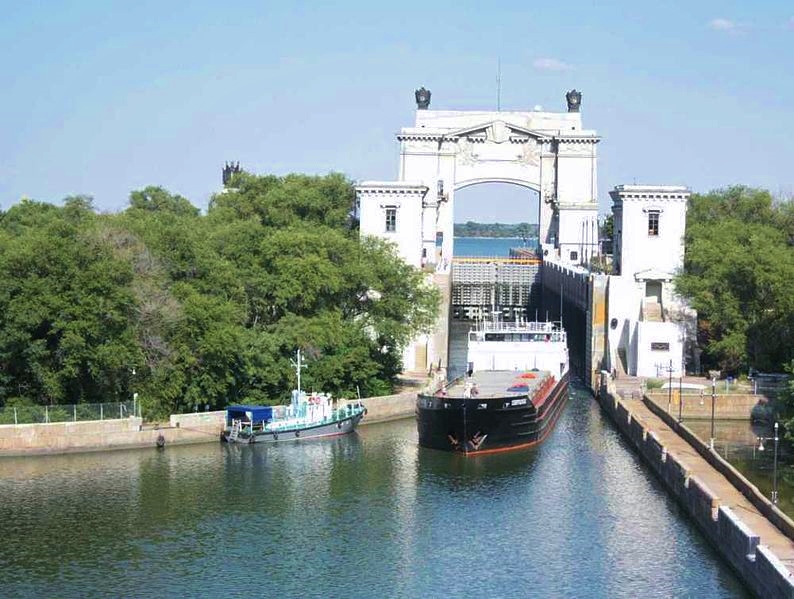
Russia Convinces ‘Caspian Five’ to Bar Foreign Militaries From the Caspian
Publication: Eurasia Daily Monitor Volume: 11 Issue: 83
By:

Russia’s March 17 annexation of Crimea dramatically shifted the Black Sea’s naval balance of power, as Russia appropriated most of the Ukrainian navy’s vessels and equipment, and absorbed Sevastopol. The North Atlantic Treaty Organization (NATO) and the United States made some symbolic remonstrations by sending several warships through the Turkish Straits into the Black Sea, but the tonnage and duration of stay of non–Black Sea warships is severely constrained under the terms of the 1936 Montreux Convention. Russia now enjoys uncontested Black Sea naval superiority, an issue that might yet prove relevant as Black Sea coastal nations continue to explore and develop their offshore energy resources.
Russian President Putin has also pressed forward on other naval fronts, from asserting Russia’s Arctic continental shelf to unilaterally closing the Sea of Okhotsk to foreign shipping by similarly claiming continental shelf rights (see EDM, April 29). All three events marked the most dramatic expansion of Russian naval power since the 1991 collapse of the Union of Soviet Socialist Republics (USSR).
Farther to the east, in the landlocked Caspian Sea basin, Russia has pulled off an even more impressive diplomatic triumph, convincing the “Caspian Five”—the littoral states of Kazakhstan, Azerbaijan, Iran and Turkmenistan, in addition to Russia—to bar foreign militaries from the Caspian by agreeing to an impending “Convention on Independence of the Caspian Sea” (https://news.nur.kz/311011.html). In an apparent diplomatic aftershock following Crimea’ annexation, Russia has convinced these states that such a convention is in their mutual interests. Azerbaijan, Kazakhstan and Turkmenistan, as former Soviet republics, have historic reasons to consider carefully the diplomatic consequences of Putin’s foreign policy toward the post-Soviet space. But the issue of Iranian acquiescence is all the more extraordinary in light of the fact that since the end of the Cold War, the Russian Federation and Iran have been at loggerheads over how to divide up the Caspian’s offshore waters and seabed.
Iran believes in an equitable, 20-percent division between the five Caspian states, while Russia has consistently promoted the concept that Caspian shoreline length determines offshore waters and seabed share.
On April 22, the foreign ministers of the other members of the Caspian Five—Azerbaijan’s Elmar Mammadyarov, Iran’s Mohammad Javad Zarif, Kazakhstan’s Erlan Idrissov and Turkmenistan’s Rashid Meredov—arrived in Moscow to discuss the upcoming Fourth Caspian Summit to be held in Astrakhan in the fall to resolve Caspian division issues. Russia’s Ministry of Foreign Affairs announced: “Regular conferences of Ministers of Foreign Affairs of the Caspian Five are an effective mechanism of cooperation in the Caspian Sea region. The format of the conference relies heavily on the high level of trust and understanding in key issues of the Caspian policies” (RIA Novosti, April 22).
While the Azerbaijani, Iranian, Kazakhstani, Russian and Turkmenistani foreign ministers could not agree on a definitive division of the waters and sea bed, Kommersant reported, “According to the source ‘b,’ Moscow managed to convince its partners that no non-regional powers should be allowed to influence decisions on the Caspian. This may in particular, involve placing restrictions on the Caspian of military forces of third countries, primarily the United States” (Kommersant, April 22).
“This [independence of the Caspian Sea] concerns everything: security issues and setting of the requirements and standards governing the region,” Russian Foreign Minister Sergei Lavrov commented after the meeting (Krasnaya Zvezda, April 22).
The Caspian is the world’s largest inland body of water, with a surface area of 143,000 square miles. Its status is formerly regulated under the February 26, 1921, USSR-Persia Treaty and the March 25, 1940, USSR-Iran Treaty. After 1991, in place of the USSR and Iran, there were now five Caspian littoral states—Azerbaijan, Iran, Kazakhstan, Russia and Turkmenistan—and wrangling began immediately over the Caspian’s division. The 1982 United Nations Convention on the Law of the Sea (UNCLOS) defines the Caspian as “a special inner sea.”
The Caspian is an endorheic sea with no egress to the open ocean. The Caspian’s sole entry and exit is the 37-mile-long Volga-Don Canal, built under the rule of Joseph Stalin and currently under Russia’s sole sovereign control. The canal’s other exit is in the Sea of Azov, which connects with the rest of the Black Sea via a narrow strait now controlled from both sides by Russia after the Crimean annexation. Since the Volga-Don Canal qualifies as Russian “internal waters,” Moscow controls the movement of any and all naval units from the “world ocean” that might attempt to enter the Caspian from the Black Sea. The Volga-Don Canal can only handle ships of up to 5,000 tons and in some places is less than 12 feet deep; it is the least known of the world’s strategic waterways.
Ironically, Iran has itself played the “gunboat diplomacy” card on the “special inner sea” in the past. On July 23, 2001, an Iranian warship and two jets forced two Azerbaijani research vessels, the Geofyzik-3 and the Alif Hajiyev, surveying Azerbaijan’s Alov oilfield 60 miles north of Iranian waters on behalf of BP-Amoco, to leave. BP-Amoco immediately announced it would cease exploration activities and withdrew the research vessels (Rigzone, July 11, 2011).
In 2003, Moscow permitted Azerbaijan to bring in several foreign-built small warships through the Volga-Don Canal (https://www.globalsecurity.org/military/world/russia/volga-don-canal.htm#prof), but given the current state of Western-Russian relations, it is unlikely that Azerbaijan, Kazakhstan, Iran or Turkmenistan would now be able to import naval vessels from beyond the region, especially ones purchased from the West.
Putin’s recent actions in Crimea, combined with the Caspian’s diplomatic isolation may have convinced Baku, Tehran, Ashgabat and Astana that contesting the “Convention on Independence of the Caspian Sea” was not worth the potential static from Moscow, given Russia’s de facto naval superiority there, embodied in the Russian Caspian Flotilla. In a possible foretaste of the future, even before Crimea’s annexation, Russia’s Caspian Shipping Co.’s tankers began interfering with Azerbaijani tankers, which were waiting to load in Turkmenistan’s Turkmenbashi port, delaying several for more than a month (Haqqin.az, April 22).
Further underlining Russia’s Caspian naval superiority, Russia’s newest missile corvettes, Grad Sviyazhsk and the Uglich, have completed sea trials and will join the Caspian Flotilla by July. (RIA Novosti, April 30). The “Convention on Independence of the Caspian Sea” will only enshrine the permanent inferiority of the Azeri, Kazakh, Turkmen and Iranian merchant marines and navies to whatever Russia chooses to float on the Caspian.




